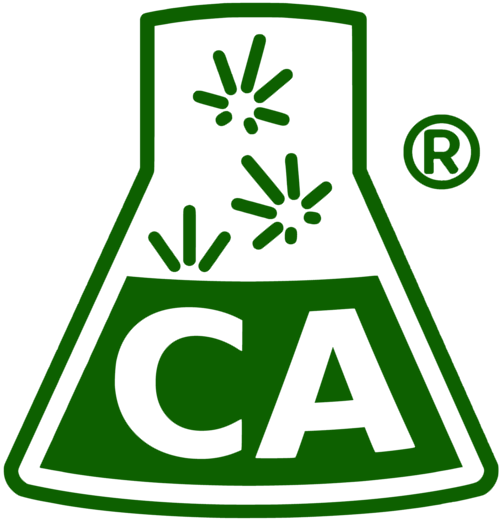What are the reasons for failing microbial analysis?
When samples are failing, it’s usually caused by a systemic problem in the facility of production or processing. In our database, microbial values are highly correlated with producer name, indicating that different marijuana production and processing facilities have different average levels of contamination and therefore different probabilities of failure. Some growers never fail – they never even come close to failing. Others struggle with it repeatedly.
In our experience, outdoor grows do not experience an elevated risk of microbiological contamination compared to indoor grows except when livestock are kept on the property or on an adjacent property, or when severe dust storms are experienced. Driving wheeled vehicles near the plants can also cause contamination from soil dust.
As a general rule, contamination is most often occurs after harvesting in the curing and trimming stages, which typically happens indoors regardless of growing conditions. Sometimes outdoor grows experience failures due to prolonged rain, moisture, or dust, but indoor grows can be similarly burdened by contamination when conditions get too wet. Indoor grows can also experience failures due to kicked-up particulates when soil or waste piles or dirty surfaces are agitated.
Enterobacteria (bile-tolerant gram-negative and coliform bacteria) – this is the most common cause of microbiological failure in this industry. These failures are the most elusive and the most dangerous to consumers. Enterobacteria are bacteria that can live in an animals gut, and while many of them are harmless, some of them can be pathogenic to humans, even deadly. This group of organisms includes E coli and Salmonella spp. Contamination can come from soil, insects, or humans. Driving vehicles or heavy foot traffic can kick up dust onto the plants, and that soil dust almost certainly contains Enterobacteria. Insects can also lead to failure. Insects leave their droppings — which contain Enterobacteria – wherever they go (even predatory insects). Finally, human exposure can be cause for failure. Enterobacteria live in your mouth and other orifices and are usually present on our hands. Excess touching and smelling of the buds can often be the source of the exposure. Be mindful of products you apply to your plants that may contain enterobacteria. Guano based fertilizers, compost teas, worm casings, and active microbial products on the PICOL list can cause failures as well. Remember that standing water (even water in a container) can develop microbial contamination over time. Be conscious of any water you may be spraying on your plants, even if the water has no additives. Water stored in a closed container (or sitting in a hose or sprayer) can still culture microbes. We have seen contamination coming from water stored and from nozzles/hoses used to spray water.
Microbial failure can be one of the more troubling and frustrating problems to troubleshoot. This is largely due to the wide variety of possible sources for contamination. The following practices should go a long way in preventing or remediating microbial failures:
- Handling – Hygienic handling practices are of paramount importance. Every surface, tool, machine, container, and (hopefully gloved) hand that contacts your harvest should be clean and sanitized. Any employee experiencing allergies or illness should wear a mask to avoid contributing bacteria through coughing or sneezing.
- Facility maintenance – Keeping a sanitary environment inside your facility can stop microbial problems before they get started. Ensure proper ventilation throughout the facility and consider installing a positive pressure system, especially if the environment outside your facility is likely to contribute microbes (for example, if there are animals present or the surroundings are prone to dust). Check and change air filters frequently. Dispose of trimmings and other wastes immediately, to avoid any buildup on floors. Avoid activities such as sweeping, which can stir up dust. Dust that settles on your plants or buds can harbor a significant load of microbes.
- Treat pest infestations promptly. The bodies and droppings of insects and other pests can contribute significant microbial contamination. If you choose to use predatory insects to treat an infestation be aware that their droppings will also leave microbial residues behind and remediation to prevent failure such as washing your product prior to cure may be necessary.
- Before use, consider the microbial content of fertilizers and other soil amendments, as well as any foliar sprays available. These products can be very beneficial to your plants, but can, unfortunately, elevate microbial counts beyond the current LCB limits, particularly guana, worm casing, and compost based products.
- Try a longer Cure. Studies have shown that over time desiccated material left to cure will reduce in microbial burden. So a product that is fully dried and left to cure will have fewer and fewer microbial as time passes. With no water, microbial growth slows. Eventually many bacteria will die without water. Fungal spores are more resiliant to desiccated conditions.
Microbial analysis currently consists of test for:
| Bile Tolerant Gram Negative: | 10,000 cfu/g |
| Salmonella: | Not Detected |
| E Coli: | Not Detected |
Failed lots for microbial may be granted a retest if the bile tolerant/ gram negative value is less than 2x the limit. Before sending a new sample for retest, feel free to contact us for tips about prevention and/or treatment of microbial contamination. We are also happy to consult with you about grow conditions and product handling to troubleshoot any microbial problems you might be experiencing and to prevent contamination in the future.
